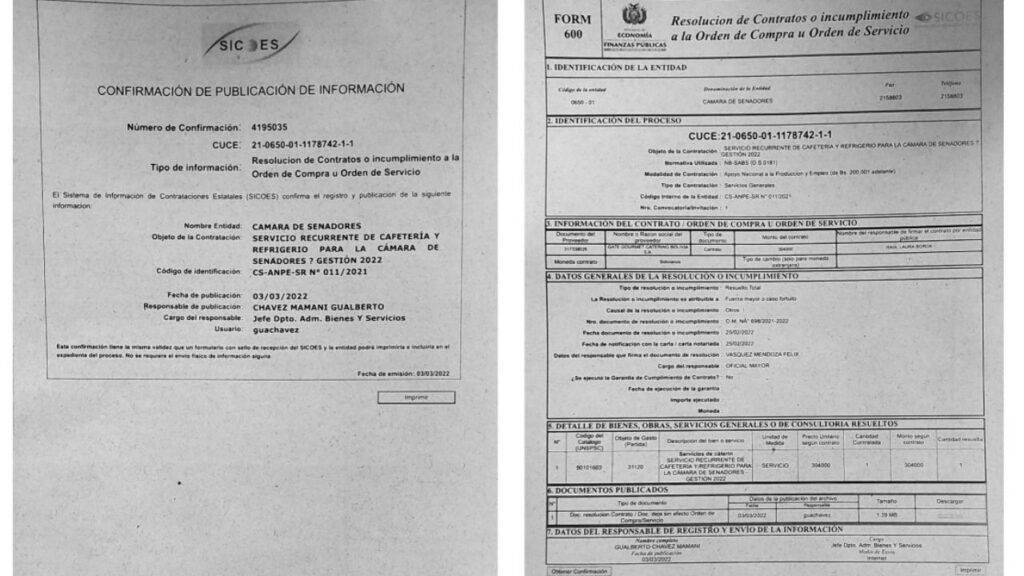Congress slowly approaches gender parity in each seat renewal election in both chambers, although there is still a long way to go to achieve total balance in the representation of women, according to the survey of the current composition of the Senate and Deputies.
Although it is still far from reaching the objective, the Senate of the Nation advances in gender parity, since since the renewal of last December, 43.05 percent of the seats (a total of 31 legislators) are occupied by women.
The president of the Women’s Bank of the Senate, María Eugenia Catalfamo, said that they must “break the spaces of power” currently in the hands of mostly men and “begin to occupy them as they truly correspond.”
43% of Senate seats are held by women
In the Senate of the Nation, the senator from the Frente de Todos por San Luis specified, “we are 31 women from 72 seats and little by little we are going to reach true parity.”
“It is the path that must be traveled,” he said in relation to the task that will be undertaken from his new position in the upper house.
At front of allout of 33 legislators, 13 are women, which constitutes 39.3 percent.
Nor does the gender interblock reach gender parity. Together for Changesince out of 31 members, only 11 are women: 35.4 percent.
The Federal Parliamentary Interblock It is the only one in which there are more female senators than male senators: María Clara del Valle Vega from Rioja and Lucila Crexell from Neuquén, two of three members.
Two exists monoblocs made up of women: We do for Córdoba (Alejandra Vigo) and the Misiones Concord Renewal Front (Magdalena Solari Quintana).
The Senate, however, saw the number of parity increased from three replacements which, compulsorily, should have been done during 2021.
The death of Carlos Reutemann from Santa Fe gave way to the assumption of Alejandra Vucasovich; while the departure of the official Jorge Taiana – today at the head of the Ministry of Defense of the Nation – allowed the entry of Juliana Di Tullio from Buenos Aires.
45% of the seats of Deputies are occupied by women
In the Chamber of Deputies, meanwhile, the entry of 61 women last December, out of the 127 seats that were put into play, made it possible for the representation of that gender to be 44.74 percent since December 10, the percentage highest since the return of democracy.
Among the majority forces, the front of all it is the only one that has a majority of women, since 60 of its 118 members correspond to that gender, which marks 50.84 percent.
On Together for Change, the female presence is 47 out of 116, which gives 40.51 percent; numbers motorized in a greater percentage by the Civic Coalition, which contributes 8 of its 11 members (72.72 percent of its own) and by Evolucíon Radical, which has 6 women on its benches out of a total of 12 places (50 by hundred).
The majority partners have smaller presences in terms of percentages: the PRO adds 21 women out of 50 members (42 percent) and the UCR was reduced to 9 out of 33 (27 percent).
On federal meetingMeanwhile, Margarita Stolbizer, the only woman of the four members of the new parliamentary force (25 percent).
The other two deputies PvC they are those of the Creo monobloc, from Tucumán, and the San Juan Production and Work block, a block that she shares with a man.
Additionally, there are three monoblocks in PvC that are occupied by males.
As for the rest of the opposing forces, the Federal interblock adds three women out of eight members, which represents 37.5 percent and the space United Provincesone out of five total, that is, 20 percent.
Finally, the Left and the libertarianspresent the same scheme two women out of four members, which means 50 percent in each case.
The Ser block, with two members, does not have a female presence.

Although parity must be given by law, the fact that the majority of the ballots of the different districts are headed by men, again made it difficult to obtain the 50/50: 66 men and 61 women entered this shift.
The presence of women in the lower house is currently 118, adding the 61 who entered and the 57 with a mandate until 2023.
With this 45.91 percent, the Chamber reached its maximum percentage of women, an important advance in relation to the 3.93 percent of female representation with which democratic life was resumed in 1983.
Key to the evolution towards this percentage was the Female Quota Law -which has been sanctioned for 30 years- and the presidential decree that in 2000 gave the interpretation that, beyond respecting the third established by that norm, the two genders should be interspersed in the first section of the list.
Thus, what was in fact a reality was circumvented: women were relegated to third and sixth place on the ballots, so the third was respected but the expectations of entry decreased considerably.
The last milestone in the search for balance in representation occurred in 2017, when the law that began to be implemented since 2019 was approved, and that establishes Gender Parity, with the clarification that if any legislator resigns from his or her seat or dies must be replaced by another of the same gender.


















